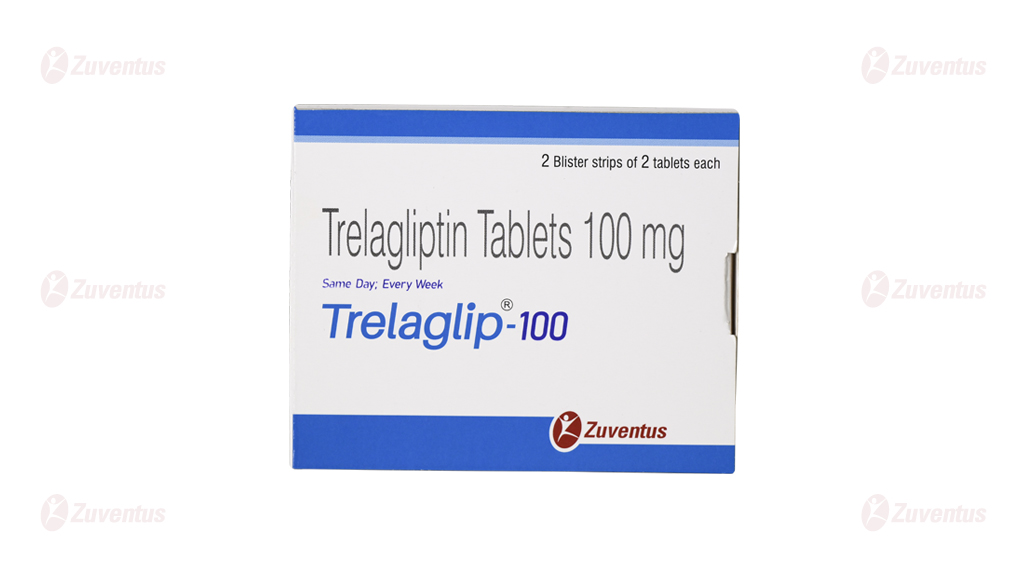Efficacy and Safety of Once-Weekly Trelagliptin As Compared to Twice-Daily Vildagliptin in Indian Patients With Type 2 Diabetes Mellitus: A Randomized, Phase 3, Non-inferiority Clinical Trial

Abstract
Background
Trelagliptin and vildagliptin are oral dipeptidyl peptidase-4 (DPP-4) inhibitors used in the treatment of type 2 diabetes mellitus. The administration of vildagliptin is twice daily, whereas trelagliptin provides the convenience of once-weekly dosing, which may enhance patient adherence. A phase 3 clinical trial was conducted to assess the non-inferiority of trelagliptin compared to vildagliptin.
Methods
This multicenter, randomized, open-label, parallel-group, active-controlled non-inferiority clinical trial was conducted at 10 geographically distinct sites across India. A total of 240 treatment-naive patients with type 2 diabetes mellitus were randomized in a 1:1 ratio to receive either trelagliptin (100 mg once weekly) or vildagliptin (50 mg twice daily) for 16 weeks. The primary endpoint was non-inferiority of trelagliptin to vildagliptin in reducing glycated hemoglobin (HbA1c) levels from baseline to week 16. Secondary efficacy measures included changes in fasting and postprandial blood glucose, fasting insulin, glucagon, C-peptide, and glucagon-like peptide-1 (GLP-1) levels. Safety was assessed based on the incidence of adverse events.
Results
At week 16, the mean HbA1c levels were 7.18 ± 1.47% and 7.21 ± 1.49% in trelagliptin and vildagliptin groups, respectively (Δ -0.89% vs. Δ -1.00%, p < 0.0001). The difference between groups was 0.11% (95% CI: -0.28 to 0.50; p = 0.5899), showing non-inferiority of trelagliptin. A total of 48.57% of patients in the trelagliptin group and 47.57% in the vildagliptin group achieved the target HbA1c level of <7% (p = 0.8850). No statistically significant differences were observed between the groups for glycemic parameters, including fasting blood glucose (Δ 1.11; 95% CI: -16.79 to 19.02; p = 0.9025), 2-hr postprandial glucose (Δ 3.33; 95% CI: -30.55 to 23.88; p = 0.8093), fasting serum insulin (Δ 5.22; 95% CI: -15.01 to 25.45; p = 0.6113), fasting glucagon (Δ 0.72; 95% CI: -96.34 to 94.90; p = 0.9882), C-peptide (Δ 0.36; 95% CI: -0.31 to 1.03; p = 0.2912), and GLP-1 levels (Δ -0.02; 95% CI: -0.06 to 0.02; p = 0.3995). All reported adverse events were mild in nature and resolved without any lasting effects. Adverse events occurred in 6.67% (8/120) of patients in the trelagliptin group and 9.17% (11/120) in the vildagliptin group.
Conclusions
Trelagliptin showed a significant reduction in HbA1c, fasting, and postprandial glucose levels, indicating effective glycemic control in patients with type 2 diabetes mellitus. The study drug exhibited a favorable safety profile, with no major adverse events reported. Overall, trelagliptin proved to be both efficacious and well-tolerated, demonstrating non-inferiority to vildagliptin.
Dewan B, Shinde S, Roy S. Efficacy and Safety of Once-Weekly Trelagliptin As Compared to Twice-Daily Vildagliptin in Indian Patients With Type 2 Diabetes Mellitus: A Randomized, Phase 3, Non-inferiority Clinical Trial. Cureus. 2025;17(6):e85219. DOI 10.7759/cureus.85219.

